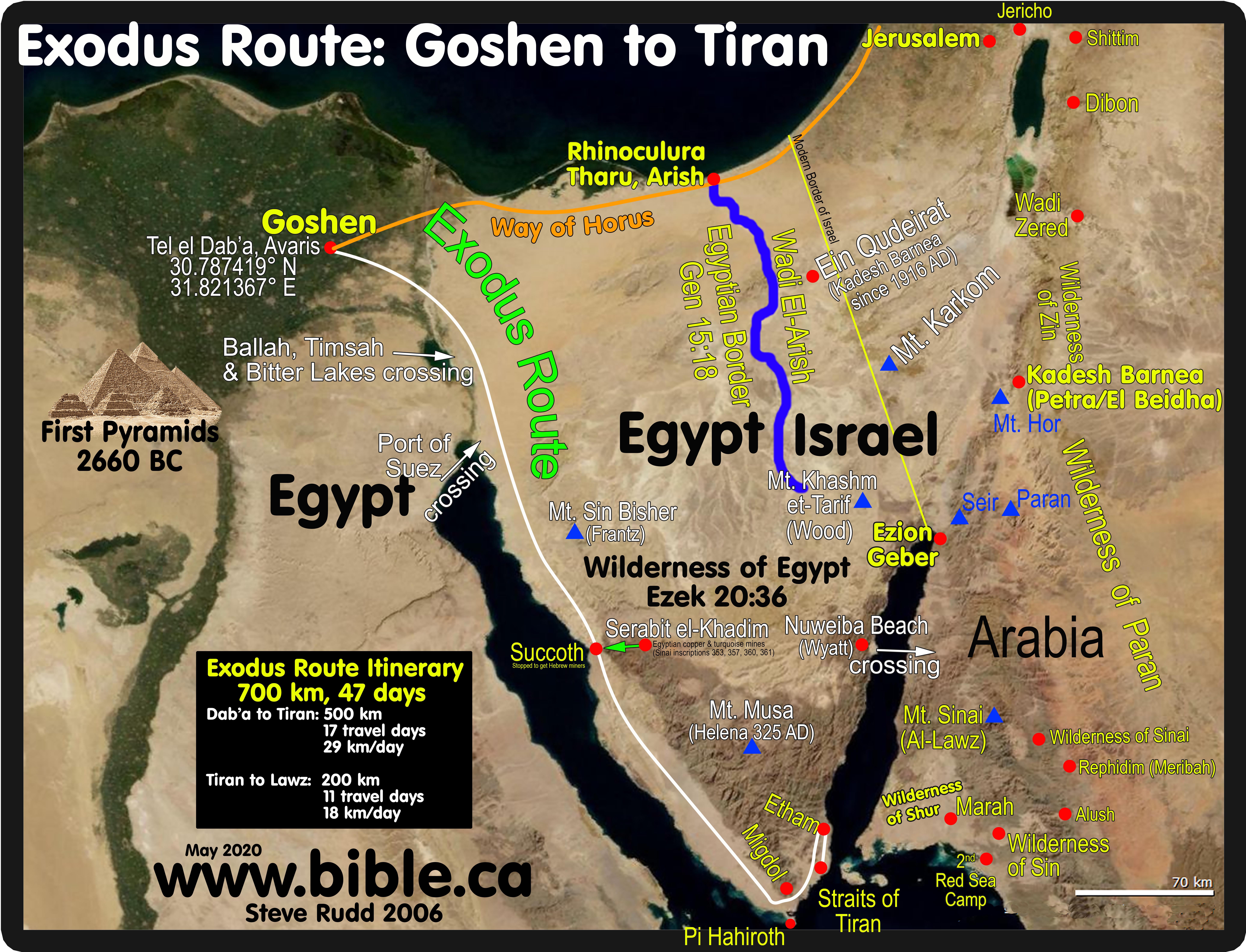
The story of the exodus of the Israelites from Egypt is one that continues to captivate and inspire people to this day. It is a dramatic tale of faith, strength, and hope in the face of incredible adversity, and it is one that has been recounted and celebrated in countless books, movies, and works of art over the years. At the heart of this story lies the Exodus Route, the path that the Israelites took as they escaped from the grip of Pharaoh and made their way towards the Promised Land. In this post, we will take a closer look at this route, exploring some of the key milestones along the way, and examining the historical and archaeological evidence that supports its existence. The Exodus Route begins, of course, in Egypt itself, in the region known as Goshen. This is the area where the Israelites had been living as slaves, and it was from here that they set out on their journey towards freedom. The Bible tells us that they were led by Moses, and that their ultimate destination was the land of Canaan, which had been promised to them by God. According to the Book of Exodus, the first major obstacle that the Israelites faced on their journey came when they reached the Red Sea. Trapped between the Egyptian army and the water, they seemed to be at a dead end. But then, with the help of a miracle from God, they were able to cross the sea safely, with the waters parting to allow them to pass through. From there, the Israelites made their way towards Mount Sinai, the site where Moses received the Ten Commandments. This mountain is located in the Sinai Peninsula, which is part of modern-day Egypt. Along the way, they encountered a number of challenges, including thirst and hunger, and they struggled to maintain their faith and resolve in the face of these difficulties. One of the key pieces of evidence supporting the existence of the Exodus Route is the presence of various sites and artifacts that are mentioned in the Bible. For example, there is a region called Marah, which is described in the Book of Exodus as a place where the Israelites found bitter water. Archaeological evidence has shown that there was indeed a place in this region where the water was high in mineral content, suggesting that this may be the site referred to in the Bible. Similarly, there is a site called Elim, which is described in the Book of Exodus as a place where the Israelites found twelve springs and seventy palm trees. In the nearby Wadi Ghazala, archaeologists have found evidence of a large settlement dating back to the same period, with dozens of wells and reservoirs that may be the source of the twelve springs mentioned in the Bible. As the Israelites continued on their journey, they encountered a number of other key sites and landmarks, including the Wilderness of Sin, the Rock of Horeb, and the Valley of Rephidim. Some of these sites are still known by these names today, while others have been lost to history. Despite the challenges they faced, the Israelites were ultimately able to make their way to the Promised Land, and the Exodus Route remains a powerful symbol of faith and perseverance to this day. By examining the historical and archaeological evidence associated with this route, we can gain a deeper understanding of this important chapter in human history, and the enduring lessons that it can teach us about courage, determination, and the power of the human spirit.

www.bible.ca - exodus route sea egypt red goshen bible sinai map maps wilderness pi hahiroth ancient kadesh crossing barnea succoth israel mt

godswarplan.com - exodus sea red egypt crossing hebrews god egyptian escape route bible bc ancient army delivers pharaoh destroyed maps 1446 under

www.pinterest.com - sea red crossing exodus sinai map egypt mount israelites bible where arabia israel location route history moses old mt biblical



Post a Comment for "Red Sea Crossing Map"